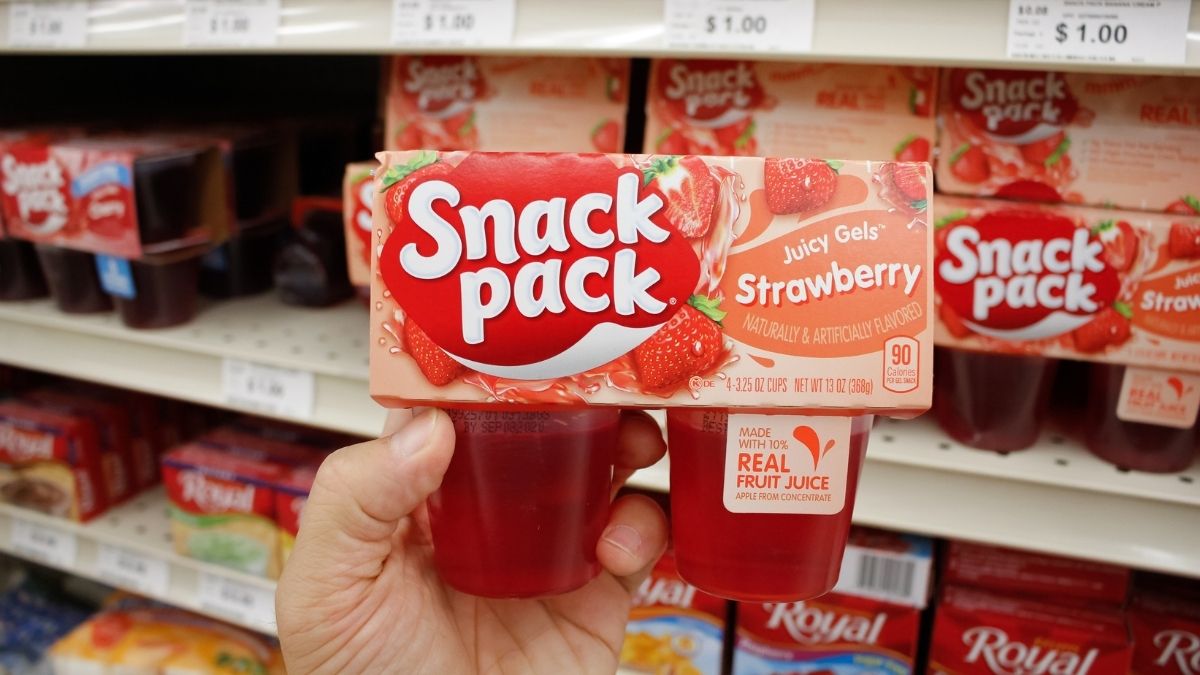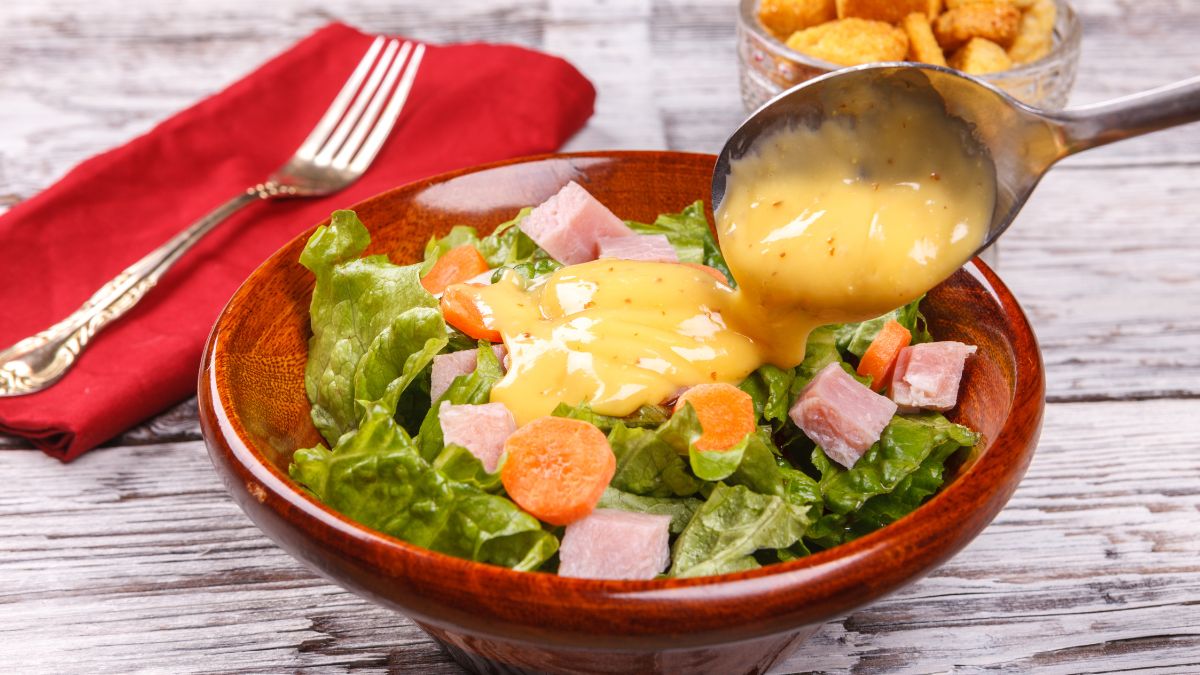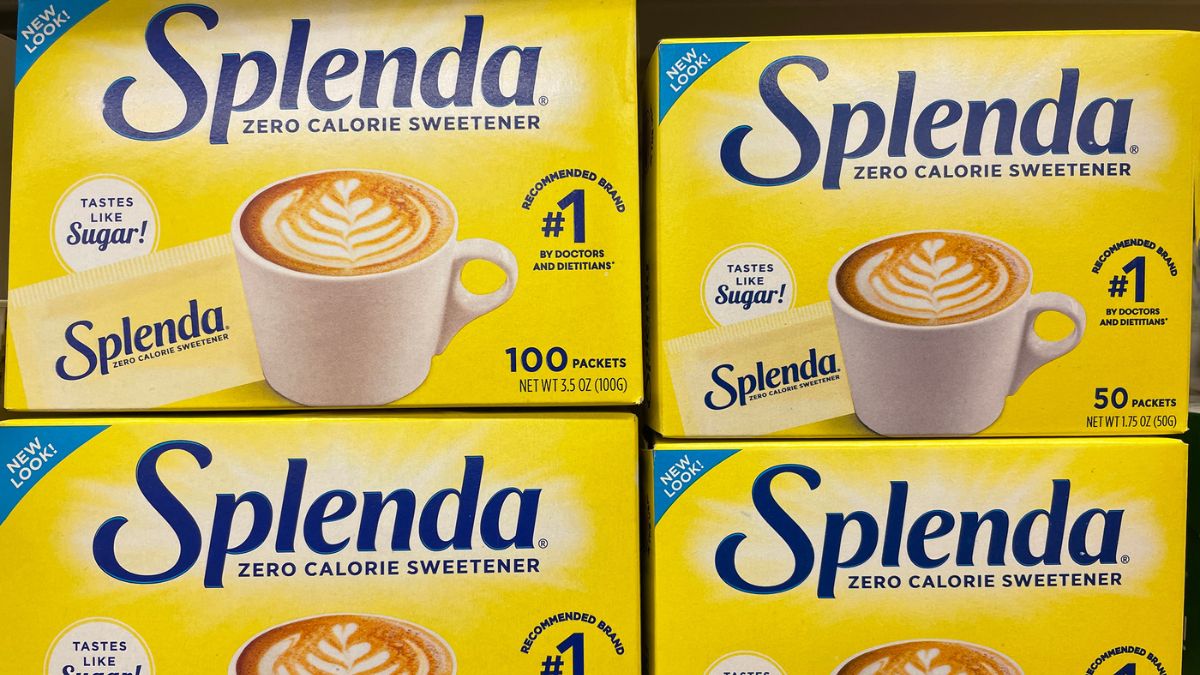Hunt’s Snack Pack is a variety of packaged pudding and jello desserts whose popularity stretches as far back as 1968. Owned by ConAgra Foods, Snack Pack was probably your grandparents’ or parents’ favorite canned sweets when they were kids, and is still a favorite delight today.
Pop culture has made Snack Pack even more widespread due to its numerous cameos and subtle advertisements from 1995’s Billy Madison to this generation’s Netflix indulgence, Stranger Things.
Originally contained in iconic, aluminum cans that helped preserve the no-preservative, no-HFCS pudding, advanced manufacturing and food packaging standards now produce Snack Packs in sealed, plastic containers.
All pudding products of Snack Pack contain milk, but the Snack Pack gels don’t contain any of the eight major allergens and are vegan.
However, just because a company claims that none of their jello contains milk or any other allergen, doesn’t mean that we won’t verify their ingredients. So, what makes Snack Pack Jello vegan?
Table of Contents
Basic Ingredients
What sets Snack Pack Jello drastically different from common jello is what it uses as a thickener to achieve a gelatinous texture. Now, I may have mentioned “gelatin,” but Snack Pack Jello contains none of that animal-derived thickener. Instead, Snack Pack uses a red seaweed extract known as carrageenan.
Carrageenan
Carrageenan is obtained from the Chondrus crispus red algae. According to a blog on the difference between agar-agar and carrageenan, the latter has gelling, emulsifying, and stabilizing properties, which is why it can be used alone as a thickening food additive rather than using both gelatin and agar-agar.
Carrageenan is more widespread than you might think, as it’s commonly used in preparing a variety of confectionery products, ice cream, yogurt, cheeses, milk chocolate, and custards. So it’s a vegan-friendly ingredient that is common even in non-vegan foods.
More so, even when carrageenan is naturally plant-based, it’s commonly tested on animals whether it has potential inflammatory effects. For now, the FDA has approved the use of carrageenan as a food additive but requires manufacturers to label it as an ingredient. However, little is known about carrageenan’s long-term effects on humans, and due to the lack of sufficient information on the food additive, very few of it is added to processed foods.
In a Snack Pack Jello, carrageenan makes barely 2% of the product, which is why its gelling and thickening properties are backed by another gum, carob bean.
Carob Bean Gum
Carob bean gum is also known as locust bean gum, and this is because the gum is extracted from the seeds of a locust bean tree. It’s commonly paired and combined with carrageenan to form what is known as vegan gelatin mix.
So named for its fruit pods that resemble locusts, a carob tree produces elongated fruits that have a mildly sweet, chocolate-like taste. It’s rumored that carob beans are substituted for cacao beans, but chocolate made from these beans isn’t common as once you boil the fine, powdered form of the beans, the mixture turns into a gel once cooled.
This is due to the galactomannan polysaccharides the beans contain. These polysaccharides are indigestible fibers that have long, molecular chains that allow the locust bean gum to turn into a gel, if mixed with another gum like carrageenan, brought to near boiling, and then cooled. It acts as an additional thickener and water limiter in food-grade products.
According to Healthline, carob bean gum is safely vegan, and an excellent plant-based thickener instead of gelatin. You can pretty much make any vegan ice cream, yogurt, and cheese from carrageenan and carob bean gum.
While carrageenan has no known health benefits so far, carob bean gum has proven its worth, even as an additive to infant food. Being high in fiber, carob bean gum may help digestion for both babies and adults. Supplemental carob bean gum may also aid in lowering blood sugar and bad cholesterol levels.
However, once again, carob bean gum supplements are also tested on animals, and very little of it is added into a Snack Pack Jello so you’d barely even taste it in there. You can only feel carrageenan and carob bean gum in a pack of jello as they’re responsible for the gelatinous texture of your flavored treat.
Water & Sugar
Water is added to activate the gums and form a base gel. Vegan gelatin is mixed with fine granules of cane or beet sugar, before putting into the water. Once mixed with water, the mixture is whipped and heated. The mixture is then taken out of the heat right before boiling and poured into a mold, where it cools into a gel. This is essentially a dessert known as a raindrop cake. This is also the foundation of all Snack Pack Jello.
Fruit Juice From Concentrate
Fruit juice concentrate is simply dehydrated fruit juice which does retain some of its original nutrients and vitamins, but also spoils slower than raw fruit juice. In most confectionaries and treats, juice concentrates lack sugary flavors, which is why they’re added with high fructose corn syrup or HFCS.
Fortunately, Snack Pack Jello doesn’t use HFCS and the brand claims that it never used a sugary and unhealthy cheat as HFCS. Thanks to the use of juice concentrate instead of regular fruit juices, Snack Pack Jello has longer shelf lives and is even better when refrigerated.
Acids
Acids such as adipic, citric, and malic are used as natural acidifiers, taste additives, and preservatives in jello that may come from real or artificial ingredients in the product. While malic and citric acids can be found in apples, adipic acid is derived from beet juice.
Salts Or Citrates
Sodium chloride or common salt can be used in some candies and jello as an added preservative and stabilizer. While sodium citrate and potassium citrate are salts of citric acid that act as pH balancers and emulsifiers.
Food Colors
- Blue 1 – originally derived from coal tar
- Yellow 5 – derived from petroleum products
- Yellow 6 – derived from petroleum products
- Red 40 – derived from petroleum products; not to be confused with Red 4 which comes from cochineal beetles
Natural And Artificial Flavors
Natural flavors are those derived directly from the real, organic ingredients in a product such as fruits and sugars, while artificial flavors are manufactured from chemicals that produce distinctive tastes.
Other Possible Additives
- Modified Tapioca Starch – a gluten-free thickening, stabilizing, and anti-caking agent used in common confectionaries.
- Sucralose – an artificial sweetener that is sugar-free and 600 times sweeter than actual sugar; has almost 0 calories because it can’t be broken down by the body into energy
- Xanthan Gum – usually derived from sugar, but according to Healthline, this sugar can come from a variety of sources including gluten and dairy. So if you see xanthan gum in the ingredients list of your candy or treat, take precaution. Used as a thickener.
- Maltitol – a fermented sugar alcohol used as a sweetener and has half the calories of regular sugar. It tastes 90% sweeter than actual sugar.
- Acesulfame-K – a sugar-free additive whose background is quite controversial and speculative. Although approved by the FDA, acesulfame-potassium has a lot of risks involved when taken excessively.
Is Snack Pack Jello Healthy?
Besides the other possible additives, most Snack Pack jellos are considerably fine, but not necessarily healthy. It’s great that they don’t use gelatin and HFCS, and most of the products have low calories. However, it’s the sugars involved that we may want to consider.
It’s a readily accepted fact that eating too much sugar is bad for health, and it’s been proven time and time again as more people develop high blood sugar, cholesterol, and pressure. Obesity and diabetes are also present fears when it comes to excessive sugar intake.
Simply put, there are a lot of risks and health problems involved with eating too much sugar, and studies suggest limiting one’s intake of added sugars to 10% of their daily diet per day to stay on the safe side. Weight gain, heart disease, cancer, skin problems, and energy depletion may all be directly related to one’s usual intake of sugar.
Snack Pack jellos don’t contain fats nor proteins, but they do contain carbs of which most are added sugars. Serving size of 150 g of a Snack Pack jello would already contain about 35 g of added sugar. So it’s a treat to be taken responsibly, and not for over-indulgence. This also applies to nearly all treats and confectionaries available today.
Don’t get sucked up by their sugar-free products either, as even when these products contain fewer sugars, carbs, and calories, they’re not very healthy either as the sugars are replaced with artificial sucralose, alcohol maltitol, and the controversial acesulfame-K.
It’s still best to take sugar and treats like Snack Pack jello in moderation and focus one’s diet on whole foods that do have real health benefits and calories.
Bottom Line
No matter what age you’re at today, you know that Snack Pack has become part of past and present pop culture, and perhaps have been a family favorite over the years. Their jellos are vegan-friendly through and through and compared to other confectionaries and treats, they’re more tolerable and healthier by a small margin.
As a vegan, you’re not disallowed from partaking in these tasty treats, but always consider eating in moderation, especially when the food is sugary and sweet. There’s no problem indulging and satisfying your sweet tooth once in a while, but since you’ve already chosen this path, work it and learn to discipline yourself when needed.
That’s all for now and remember to enjoy what you eat, and eat what you enjoy.




